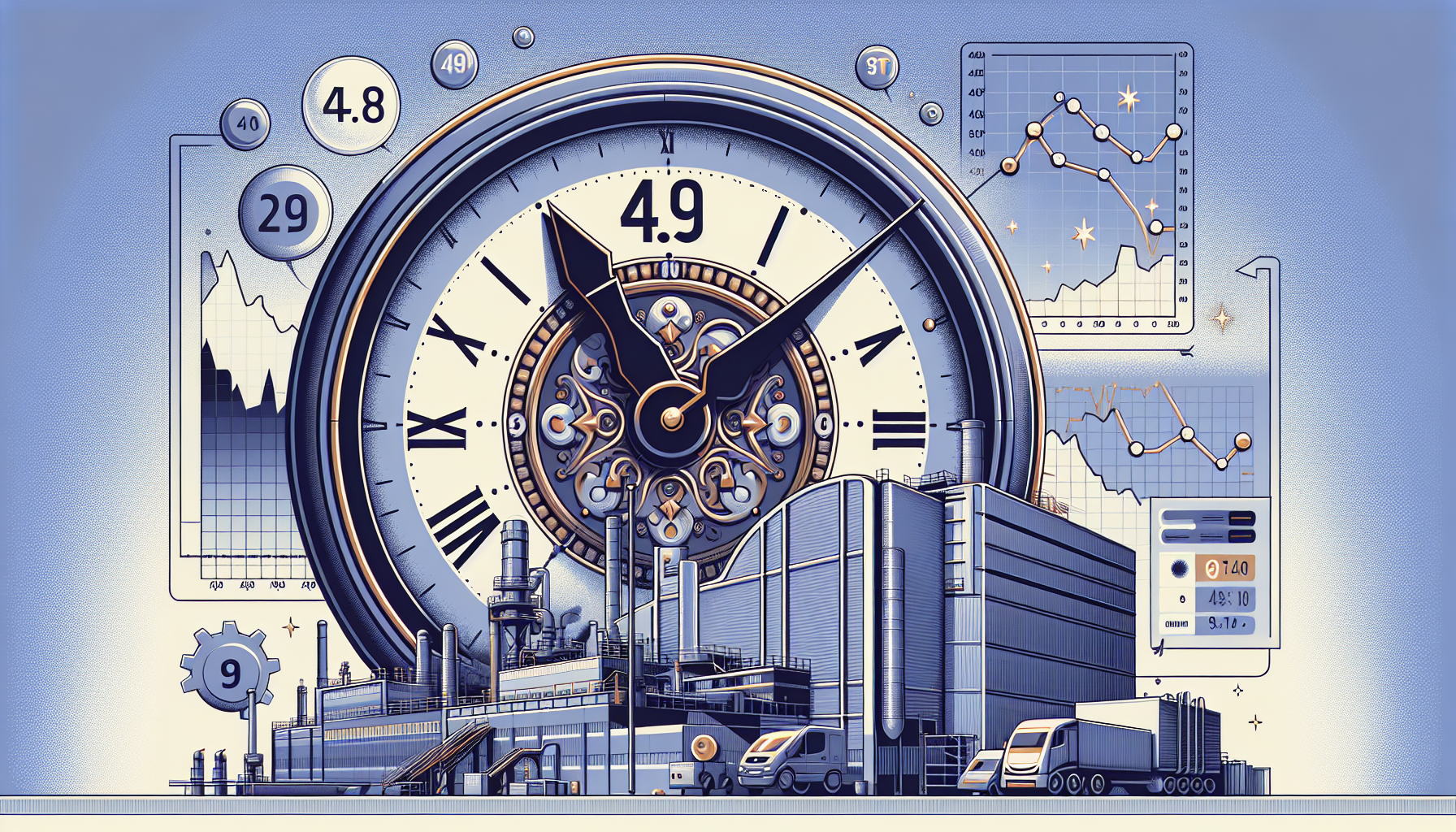
eurozone manufacturing gains momentum
For the eurozone’s manufacturing sector to achieve sustainable growth, it is essential to address the uncertainty in France. Stability in France’s economic and political environment is crucial, as it would enable more consistent progress across the eurozone’s manufacturing landscape.
As manufacturers strive to stabilize their operations, the eurozone must focus on enhancing supply chain resilience. This might involve diversifying supply sources, investing in technology to improve logistics efficiency, and fostering stronger collaboration with international partners. By addressing these supply chain challenges, the eurozone can support its manufacturing sector in achieving more sustainable and robust growth.
challenges in France and Germany
France remains a significant challenge for the eurozone’s manufacturing sector, as it grapples with a decline in production over the past two months. Despite this downturn, employment levels in France have seen a slight increase, which paradoxically leads to reduced productivity and hinders economic growth. This situation poses a considerable obstacle to the overall progress of the eurozone’s manufacturing industry.
Supply chains remain fairly strained, with longer delivery times. The delay is not demand-driven, reflecting the recovery’s fragility. Volatile U.S. tariff policies and geopolitical tensions could be key factors. We anticipate ongoing supply chain disruptions for the foreseeable future.
Conversely, Germany presents a contrasting scenario where production is on the rise, yet employment figures are shrinking. This divergence highlights the differing economic landscapes within the eurozone’s powerhouse nations. The challenges in France are exacerbated by an impending austerity budget and the looming risk of governmental instability. These factors contrast sharply with Germany, where hopes for economic growth are bolstered by an expansionary fiscal policy and a relatively stable political climate.
impact of supply chain disruptions
Supply chain disruptions continue to pose a significant challenge to the eurozone’s manufacturing sector. One of the primary issues is the prolonged delivery times that companies are experiencing. These delays are not driven by surging demand, which underscores the fragility of the current recovery phase. Instead, they reflect ongoing logistical challenges and constraints that manufacturers are navigating.
“France is the primary obstacle to growth in the eurozone’s manufacturing sector. It’s troubling that despite a decline in production over the past two months, employment in France has slightly increased, leading to reduced productivity and hindering economic growth.
“Volatile U.S. tariff policies and geopolitical tensions could be key factors. We anticipate ongoing supply chain disruptions for the foreseeable future,” noted Dr. Cyrus de la Rubia.
In the larger economies and Austria, the Purchasing Managers’ Index (PMI) indicates a significant alleviation of the industrial recession, broadening the scope of recovery. The newly established EU-U.S. trade framework is expected to reduce uncertainty and support a continued upward trend in the coming months.
Manufacturing momentum in the eurozone
The geopolitical landscape, marked by volatile U.S. tariff policies and tensions, further complicates the situation. These factors have the potential to exacerbate supply chain issues, adding layers of uncertainty for manufacturers who rely on cross-border trade and global supply networks. The unpredictability surrounding these external elements means that businesses must remain vigilant and adaptable to mitigate potential disruptions.
Challenges and uncertainties affecting growth
Manufacturing in the eurozone is cautiously regaining momentum, with smaller economies fueling optimism. Spain and the Netherlands show signs of accelerated economic growth, while Ireland and Greece continue to expand. In the larger economies and Austria, the PMI indicates a significant alleviation of the industrial recession, widening the recovery scope. The new EU-U.S. trade framework should reduce uncertainty and support a continued upward trend in the upcoming months.In Germany, production is rising while employment shrinks, offering a contrasting scenario. France’s impending austerity budget and potential government instability present significant challenges, unlike Germany, where an expansionary fiscal policy and a stable political climate foster growth potential. For the eurozone’s manufacturing sector, reducing uncertainty in France is crucial for sustainable development.Production volumes have shown a slight increase, despite a marginal decrease in new orders. According to Dr. Cyrus de la Rubia, Chief Economist at Hamburg Commercial Bank, the eurozone’s manufacturing sector is cautiously regaining momentum. Smaller economies are fueling optimism, with Spain and the Netherlands exhibiting signs of accelerated economic growth. Ireland and Greece continue to expand their manufacturing activities.